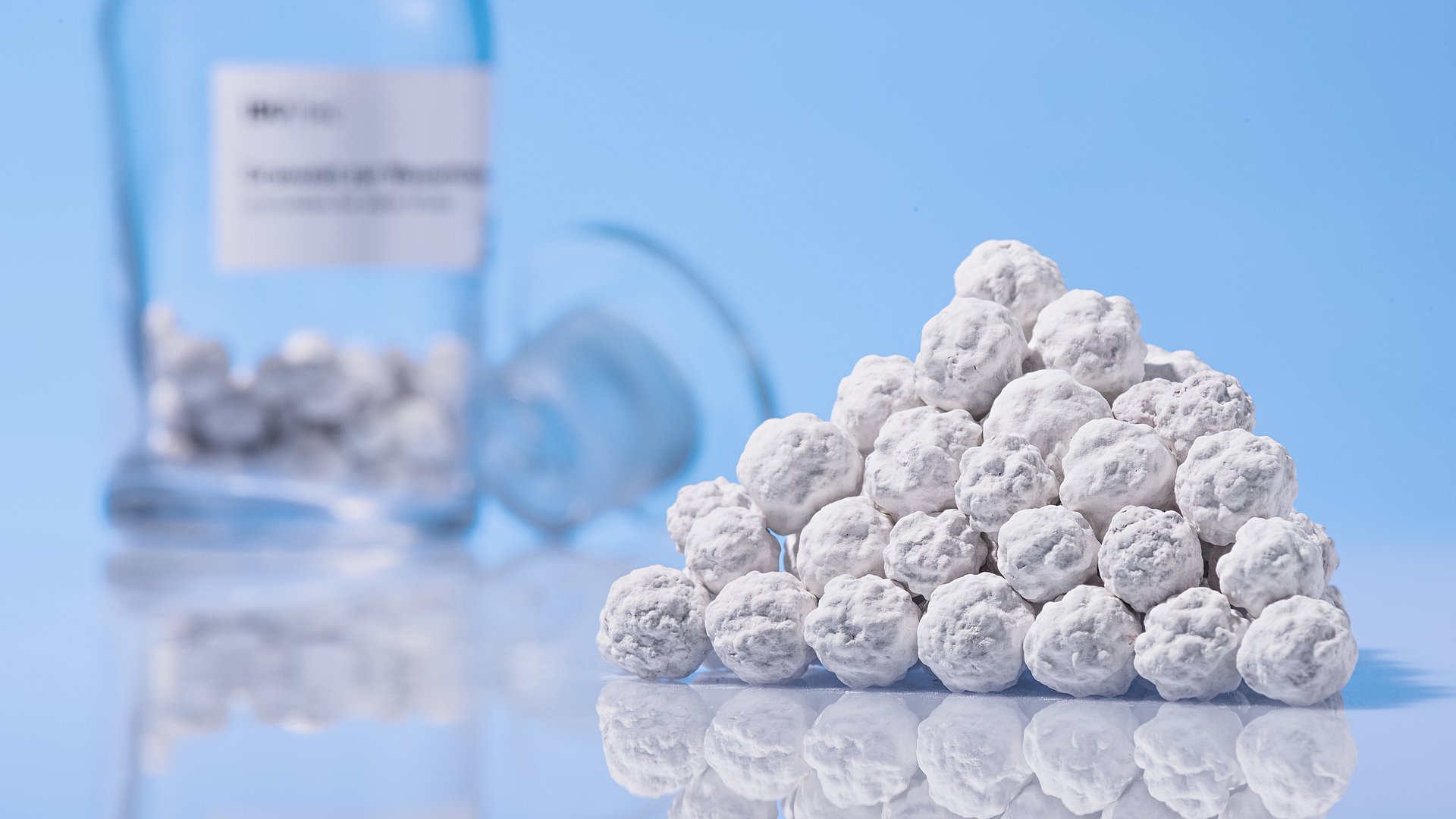Granulation Products in Process Engineering
Particles from granulation generally have a round, rotationally symmetrical shape. The aim is to achieve a narrow particle band with a homogeneous particle size distribution, in which the granules can have a target size of between 1 mm and 15 mm in diameter. In mechanical granulation, the spherical shape is a result of the rotation and geometry of the granulation apparatus. Binding agents are also often used, which help to gradually "wind up" the solid material in the build-up pelletizer and hold it together better in subsequent process steps.
This is one of the main tasks of granulation and its role in industrial processing technology: shaping in order to stabilize it in subsequent processes, during transport or, in rare cases, in the end application, and to facilitate this, for example for treatment in a thermal process in one of our rotary kilns. In addition to water, clays, for example, can be used as a binding agent, as can organic materials such as cellulose or sugar.
In contrast to briquetting, however, no additional pressure is applied during granulation, which results in agglomerates that tend to be less dense and have a certain porosity. This porosity can be useful and desirable for the intended applications or processes.
End Products from Granulation
Intermediate or end products that have undergone granulation are mainly found in the building materials industry or the chemical industry. For example, granulation is used for the production of expanded clay or, historically, cement in the semi-dry process. Other examples of applications include zeolites and the shaping of catalyst carriers or the catalysts themselves. Granulation also plays a very important role in ore processing, particularly in the production of iron ore pellets.
Different Granulators
The most common granulation devices are the granulation plate, the granulation drum, the granulation mixer, the Eirich intensive mixer and the fluidized bed reactor.
The latter process has the ability to produce the smallest granulated particles, at the lower end of the spectrum between 1 mm and 15 mm. The fluidized bed also has a special position, as it does not granulate purely mechanically like the others, but sprays and atomizes a liquid reactant, which produces the spherical granules.
The granulating mixer can form the next largest granules in the range of possible grain sizes, while at the same time mixing the material.
Granulating drums are rotating cylinders with a tilt angle that allows the treated material to pass through the granulator in a defined dwell time. As a result, even larger particles can be produced. Our rotary kilns can also be used as pelletizing drums, for example.
With pelletizing discs, the largest particles can be formed, at the upper end of the diameter spectrum, up to 15 mm. They have a large diameter with a comparatively small cylindrical edge and are positioned at an angle of between 60° and 70°. The granules are shaped by rolling the solid material in the rotation of the plate, which results in a narrower grain band than in the granulating mixer. Open pelletizing discs are usually used in ore processing.
Experience of IBU-tec
IBU-tec has extensive experience in process development for cement production and in the development and production of other building materials as well as in the manufacture and development of various catalysts and catalyst carriers. Granulation in this context is therefore one of our standard processes that we can offer customers as part of our supplementary plant technology.

